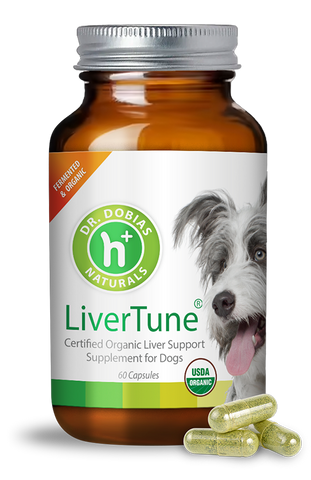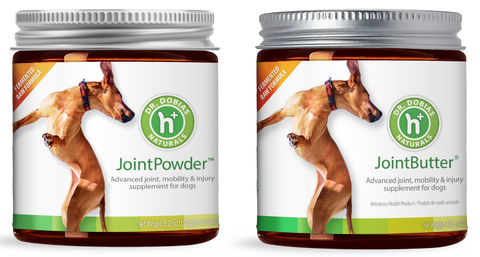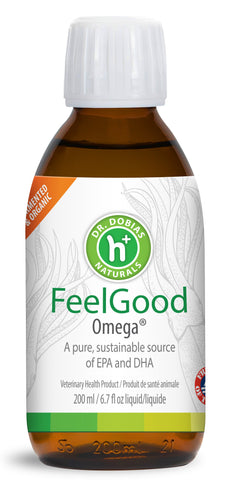Unleash the Joy! – Science Based Natural Solutions for Your Dog’s Joint Health and Mobility
Does your dog seem to be in pain, having trouble getting up and moving around?
Are they limping or favoring a leg?
Have they been slowing down on walks or not wanting to play as much?
Do they yelp or whine when getting up or being touched?
It happens so quickly.
One day, our dogs are boisterous, wild puppies with seemingly endless energy. Then, almost overnight, we notice stiffness and injuries, and suddenly our dogs are older, slower, and often stiff.
If you’ve experienced living with an aging dog, you know how heartbreaking it is to watch them slow down, struggle to play, limp, and clearly be in pain.
Many of us understand how injuries and achy joints feel, which makes our search for the right natural remedies for arthritis in dogs even more urgent.
Deep inside, we know that life doesn’t have to be this way.
Most people assume that stiffness and arthritis are inevitable as dogs age, but this is not true. There are ways for dogs to enjoy a pain and stiffness-free life and regain some of that lost “puppy pep” naturally, without NSAIDs (anti-inflammatory drugs) that can cause stomach ulceration, kidney and liver disease, and decreased long-term healing.
There is so much you can do to make your dog feel better and more comfortable and this is exactly what I would like to share with you in this article.
What is Osteoarthritis?
Osteoarthritis is a degenerative joint disease characterized by the breakdown of joint cartilage and underlying bone, often leading to pain and stiffness.
While arthritis is most common due to aging and wear and tear on the joints, there are many other factors playing a role such as genetic predisposition, ligament and tendon injuries, obesity, immune system disorders, diet related imbalances and metabolic disease.
To understand osteoarthritis, it is essential to first comprehend the anatomy and function of a joint.
Joints are complex structures that connect bones, facilitating movement and providing mechanical support.
They consist of several key components:
-
Articular Cartilage: This smooth, slippery tissue covers the ends of bones in a joint, reducing friction and absorbing shock during movement. The most common type of articular cartilage is hyaline cartilage, known for its translucent white-blue appearance. It ensures smooth articulation between bones.
-
Fibrocartilage: Found in certain joints like the intervertebral discs and menisci of the knee, fibrocartilage is tougher and more flexible than hyaline cartilage. It provides additional support and cushioning in areas subjected to high pressure.
-
Synovial Membrane: This membrane lines the inner surface of the joint capsule and produces synovial fluid, a viscous lubricant that nourishes and protects the cartilage while facilitating smooth movement.
- Joint Capsule: A fibrous tissue that encloses the joint, maintaining its stability while allowing movement.
In osteoarthritis, the degeneration of articular cartilage leads to increased friction between bones, causing pain, swelling, and reduced mobility.
Over time, inflammation can result in the thinning of the synovial fluid, changes to the underlying bone structure, and the formation of bone spurs or osteophytes.
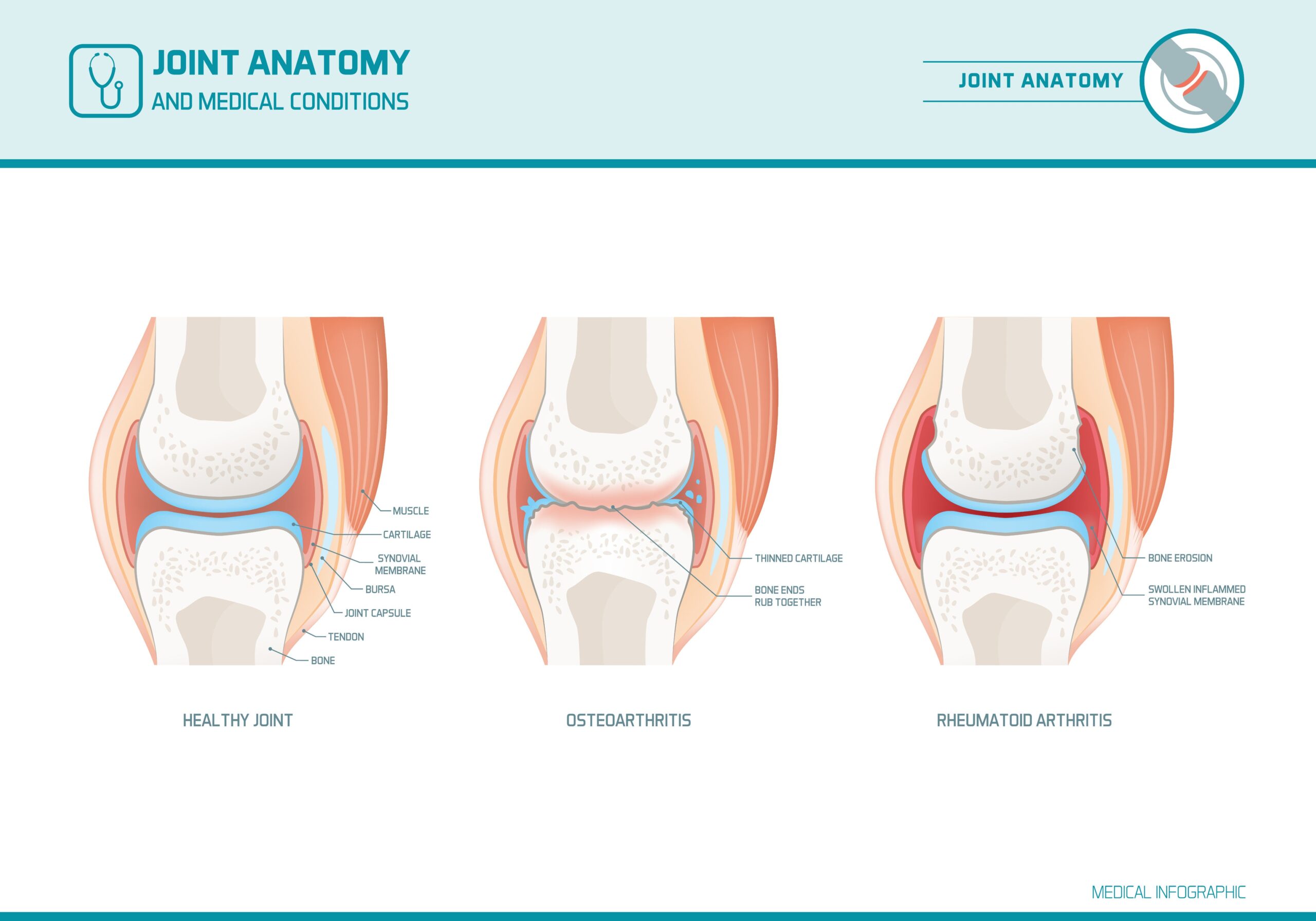
What Can You Do to Help Your Dog Feel Better and Be More Comfortable?
I have spent the past 30-plus years learning, researching, and working with my patients to create a simple and easy-to-follow universal principle of healing, including arthritis and mobility issues.
Over the years, I have finely tuned, simplified, and added elements that work to improve the results.
As it happens in life, my dog Pax has been the greatest teacher on this journey. When he started limping shortly after his second birthday, his condition helped me refine the Healing Cycle and how to use it in treating arthritis and mobility issues.
What is the Healing Cycle?
Nature is the greatest inspiration when it comes to healing. It is a master at purifying ecosystems, recycling nutrients, and providing nourishment.
Every step of the Healing Cycle is inspired by nature and can be applied to maintain and improve your dog’s health, including arthritis and mobility issues.
Step 1 – Detox
Our dogs, like us, are exposed to thousands of foreign substances that can be toxic. How do toxins affect joints and mobility? Among other tissues, toxins accumulate in joints and muscles, triggering inflammation which in turn triggers an immune response leading to more inflammation, thinning synovial fluid, destruction of cartilage, and arthritis.
How to detox for arthritis and stiffness:
Over the years, I have developed a simple plan using LiverTune® a certified organic, fermented herbal detox formula that I recommend for one week every month.
– Do the first detox daily for 4 weeks.
– Do consecutive detoxes once a month for 7 days.
Step 2 – Immunity
The immune system is closely connected with joint health; 80% of its function resides in the gut.
Some forms of arthritis result from the immune system creating antibodies against its own cells. It’s easy to imagine how overwhelmed our immune system becomes in an age filled with toxins, processed food, and environmental insults.
It’s no surprise that the immune system starts “misfiring” and attacks its own tissue, including joints. This is where good prebiotics and probiotics play an important role in treating arthritis as well as any chronic disease. Strong immunity equals vibrant health.
Step 3 – Wholesome Unprocessed Diet
Feeding the right food is crucial for preventing arthritis. If you’re feeding kibble or any processed food, there’s a greater risk of exposure to rancid food with lower nutritional value.
There’s a reason why nutritionists advise staying on the grocery store periphery—certain foods like corn, wheat, milk products, rancid oils, artificial preservatives, additives, and flavors are inflammatory.
The body evolved to benefit from healthy natural foods; anything else can wreak havoc on its biochemistry.
I have put together a simple course sharing basic principles of natural feeding. Also Dr. Karen Becker’s and Rodney Habib’s book *The Forever Dog Life* is another great resource if you enjoy making healthy meals for your dog.
To summarize, the more processed food we feed our dogs, the more likely they are to suffer from arthritis.
Step 4 – Raw Bones and Cartilage
Many dog lovers now feed raw bones which benefit dental health as well as provides nutrients to build joint and connective tissue. Learn more details here.
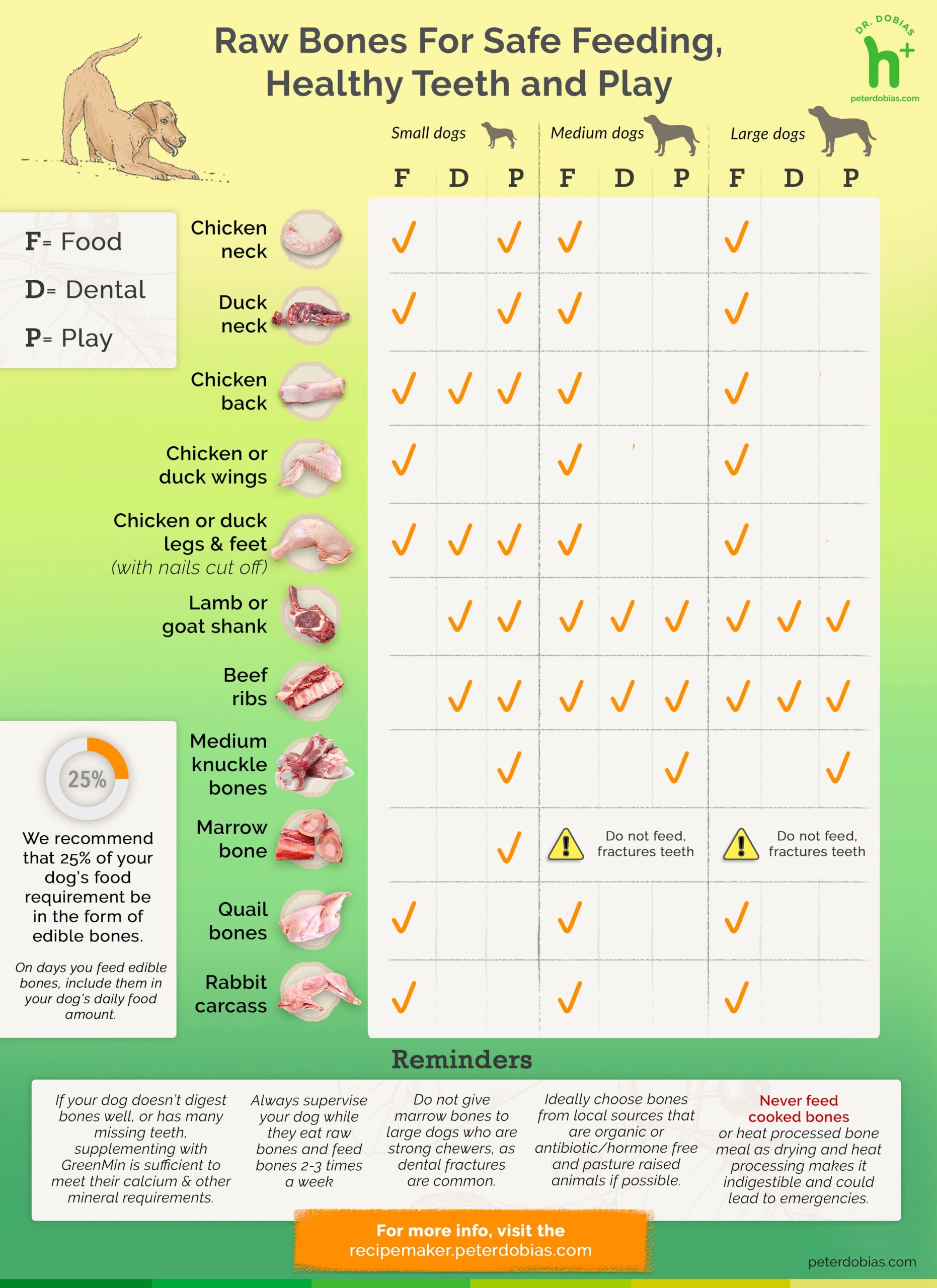
Step 5 – Exercise & Injuries
Regular exercise and activity is a powerful tool in managing arthritis in dogs.
It’s not just about keeping them physically fit, but also about strengthening their muscles, ligaments, and joints.
This, in turn, reduces the stress on their joints and cartilage, preventing inflammation and improving their overall health.
It’s a common misconception that older arthritic dogs should rest and ‘take it easy’. In reality, they need the right kind of regular exercise, such as hiking, uphill walking, swimming, gentle play, core strengthening, and agility.
I love taking my dog along anywhere, even for a city walk or errands which is always better than laying on the dog bed doing nothing.
Note: While it’s easy to spot when our dogs are limping, many early injuries are not as obvious and can go undetected. This is why it’s crucial for us, as responsible pet owners, to be vigilant and attentive to any signs of discomfort or changes in behavior that could indicate an injury.
Modern dogs suffer injuries from inappropriate exercise such as extended periods of ball retrieving, jumping up, chasing frisbees or too much swimming.
This is not to say dogs should not have fun engaging in the above mentioned activities, only that we need to be mindful of “overdoing” any activity and engage our dogs in varied forms of exercise.
Step 6 – Understanding the Importance of Spinal, Joint Alignment and Muscle Harmony
The body is a finely tuned system of cells, organs and tissues nourished by blood vessels, and controlled by nerves conducting electromagnetic energy. Your dog’s health is dependent on the free flow of this energy and its stagnation will result in suboptimal health and disease.
The spine can be seen as the main energy “highway” and the nerves and muscles are the conduits.
An injury, sprain, misalignment or weakness will result in muscle spasms and spine and joint misalignment which will eventually lead to poor health.
Thankfully, there are a variety of treatment options available, each with its own unique benefits. Physical therapy, rehabilitation, chiropractic, acupuncture, massage, laser therapy, and other techniques are invaluable in maintaining joint health and mobility, offering hope for your dog’s health.
It’s crucial to find the right practitioner who can help you keep your dog in good shape. This professional guidance is essential not only for preventing arthritis and mobility issues but also for treating them effectively.
Step 7 – Laser Therapy for Arthritis
Laser therapy offers benefits for dogs by promoting healing and reducing inflammation based on the principle of “photobiomodulation”. This principle involves a cold laser beam of a specific wavelength interacting with tissues, which then induces a beneficial healing response at the cellular level.
I have used it in the course of treating my dog Pax and use the laser on my own. I have found it very beneficial.
This non-invasive treatment is versatile and can be applied to various conditions, including arthritis, soft tissue injuries, and post-surgical recovery, without the need for sedation or medication, giving pet owners a sense of reassurance and confidence.
My colleague and friend, Dr. Laurie McCauley, a board certified rehabilitation and sports medicine specialist, offers training for pet owners in using lasers.
This training can potentially reduce the need for frequent veterinary visits, as it allows for effective at-home care, saving both time and money.
Step 8 – Boost Cell Energy
It’s important to be aware that the biological signs of aging can start as early as two years in dogs, a fact that many pet owners may find surprising.
This early onset of aging underscores the need for us to be prepared and proactive in managing our pet’s health.
This aging process is partly due to the constant repair and renewal occurring within the body, where DNA and RNA transcription replace old cells with new ones.
Unfortunately, this analog process can introduce errors, similar to the degradation seen in old audio or videotapes, leading to for example, wrinkles, weaker muscles, ligaments and joints and diminished organ function.
A significant factor in this decline is the reduction of NAD (Nicotinamide Adenine Dinucleotide), a crucial energy molecule that is necessary for cell, muscle, and organ function. Understanding the role of NAD in energy production can give us a deeper insight into the aging process.
By middle age, both humans and dogs can lose up to 50% of their NAD levels. Since NAD is unstable and cannot be directly supplemented, its precursors, NMN (Nicotinamide Mononucleotide) and NR (nicotinamide riboside), which are like the building blocks of NAD, have proven to be beneficial as supplements. This should be considered for middle aged dogs 5 years and older and people over 40.
Research confirmed that NR and NMN supplementation improve sirtuin (cell repair) enzyme activity, which is responsible for repairing damaged cells, mitochondrial function, DNA and tissue repair, potentially slowing the aging process and promoting better joint health and mobility.
Step 9 – Hormonal Health and its Effect on Arthritis
When a dog is spayed or neutered, the removal of the sex organs (ovaries or testicles) halts the production of key hormones such as estrogen and testosterone.
These hormones are crucial for a range of physiological processes that are essential for joints, tendons, muscles and overall health.
The hormonal axis, which involves the hypothalamus, pituitary gland, and the sex organs, is disrupted because the feedback loop that regulates hormone production is broken.
Numerous research studies have now confirmed that conventional spay and neutering leads to an overproduction of luteinizing hormone (LH) 30 – 50 higher than normal, which leads to inflammation of various tissues including the joints, muscles, tendons and ligaments.[1][2][3][4]
My own dog Pax started to show signs of shifting lameness which we battled with for almost three years.
I came across this research in the desperate search for answers to his condition. Within three months of starting hormone replacement therapy, in addition to JointPowder supplement, he has fully recovered and has not limped since.
He has regained his youthful energy and is now a lively, joyful companion.
Step 10 Nutritional Supplements
Wondering why food is no longer enough?
Evolution never counted on a rapid shift to industrial food production which has led to severe soil nutrient depletion and poor quality food.
Over the years, I have been able to see the differences between dogs that receive high quality supplements and those who don’t.
The main differences I have observed are increased mobility, a shinier coat, greater energy and most of all slower aging.
Here are our principles for formulating essential supplements:
- We choose products that are natural, made from herbal or superfood-based natural ingredients.
- We avoid ingredients from China, due to generally lower quality control and purity
- Our products are packaged in glass to prevent plastic and chemical leeching in the product.
- Most of the supplements I formulate, give to my dog and suggest to dog lovers, are fermented.
The fermentation process is more complex than just mixing ingredients together. It makes the active ingredients more bioavailable and seven to ten times more effective.
Your dog’s supplement could be divided into two groups:
- Joint and mobility specific supplements
- Essential vitamins, minerals and probiotics
Joint and Mobility Specific supplements
Provides the building blocks for joints, muscles and tendons, reduce inflammation and ease discomfort.
JointButter® and JointPowder are naturally fermented joint and mobility support made in the US with 13 wholesome natural ingredients such as perna mussel (a natural equivalent glucosamine), boswellia, chondroitin, organic turmeric, nettle leaf, quercetin and more…
It is available in powder and butter-like formats, based on your and your dog preferences.
FeelGood Omega® Essential Fatty Acids (Omega-3) are the foundation of healthy joints as they reduce inflammation and promote cell repair and regeneration.
The additional benefit of Omega-3 is that it protects the nerves and maintains the blood brain barrier to protect the brain from toxins, reducing the rate of cognitive decline and dementia.
Essential vitamins, minerals and probiotics
Formulated to support the body, immune system and ensure there is nothing missing in your dog’s diet.
Discover more about joint specific supplements
Discover more about general health supporting supplements
References:
(1) Animals (Basel). 2020 Apr 1;10(4):599. doi: 10.3390/ani10040599. Possible Relationship between Long-Term Adverse Health Effects of Gonad-Removing Surgical Sterilization and Luteinizing Hormone in Dogs. Michelle A Kutzler
(2) Volume 261: Issue 3. doi.org/10.2460/javma.22.08.0382. Vasectomy and ovary-sparing spay in dogs: comparison of health and behavior outcomes with gonadectomized and sexually intact dogs. Chris Zink DVM, PhD, DACVSMR, Mikel M. Delgado PhD and Judith L. Stella PhD
(3) Top Companion Anim Med. 2021 Nov:45:100565. doi:10.1016/j.tcam.2021. 100565. Epub 2021 Jul 28. Restoration of Reproductive Hormone Concentrations in a Male Neutered Dog Improves Health: A Case Study Linda Brent, Elaine A Lissner, Michelle A Kutzler
(4) WSAVA guidelines for the control of reproduction in dogs and cats S. Romagnoli, n. Krekeler, K. de Cramer, M. Kutzler, R. McCarthy and S. Schaefer-Somi
IMPORTANT NOTE: As of May 2024, the World Small Animal Veterinary Association strongly advises responsible dog owners to consider ‘hormone sparing sterilization’ – vasectomy and ovary sparing spay. This recommendation is a significant step towards improving the health and well-being of our canine companions.


